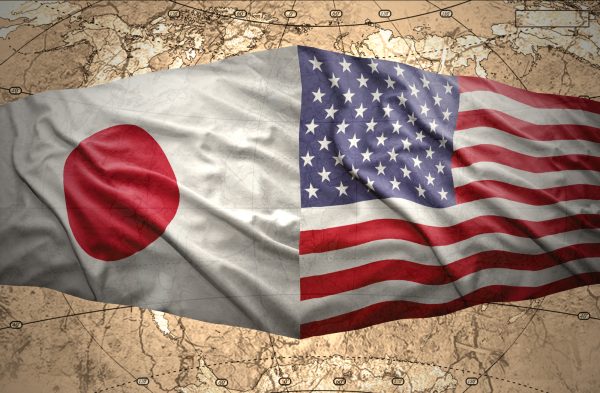
U.S. and Japanese government leaders will meet on July 29 in Washington, D.C., for the highest level version of a new bilateral policy coordination forum dubbed the Economic Policy Consultative Committee (or “Economic 2+2”). This first-ever Economic 2+2 ministerial occurs against the backdrop of a pitched battle on Capitol Hill to pass legislation that will subsidize semiconductor manufacturing investment in the United States, along with other provisions to protect U.S. economic security and promote competitiveness. Japan has already passed similar legislation this year, and such efforts by both countries include measures to diversify supply chains, control technology exports, and support scientific research to keep pace with China.
These are just the kind of modern complex issues combining technology, national security, economic vitality, and foreign policy for which this new Economic 2+2 mechanism was established. Coordinating their policies and even pooling resources occasionally can benefit both nations, but political sensitivities surrounding these issues and the newness of this forum call for modest expectations at first. Building up the effectiveness of a Japan-U.S. Economic 2+2 over the long term is more important than any immediate deliverable.
U.S. President Joe Biden and Japan’s Prime Minister Kishida Fumio announced the Economic 2+2 in January, and various preparatory meetings have been held leading up to Friday’s first ministerial. U.S. Secretary of State Anthony Blinken and Secretary of Commerce Gina Raimondo will welcome their Japanese counterparts (Foreign Minister Hayashi Yoshimasa and Economy, Trade, and Industry Minister Hagiuda Koichi) at the State Department.
The agenda is an eclectic mix that includes fostering domestic manufacturing of critical technologies, building reliable energy supply chains, and countering Chinese attempts to steal technology or use its economic leverage for strategic gain at others’ expense. The allies might also discuss overseas infrastructure investment guidelines and human rights safeguards in supply chains. Such a diverse agenda requires an unprecedented amount of collective effort among government offices not accustomed to sharing leadership. Close cooperation with the private sector is also necessary.
The Economic 2+2 gets its nickname from its similarity with the original “2+2” alliance process that brings together leaders from Japan’s Foreign and Defense ministries with those from the U.S. departments of State and Defense. For decades this Security Consultative Committee focused primarily on political and logistical issues related to U.S. military bases in Japan. However, as global threats intensified in the 2000s and allied interests increasingly overlapped, they used the Committee to coordinate foreign policy strategy for new challenges with North Korea or the Middle East. Today the Security Consultative Committee is vital for coordinating policies to help Ukraine fend off a brutal Russian invasion. The allies realized that coordinating foreign policy strategy alone was no longer sufficient, and the original 2+2 helped them reinforce diplomatic strategy with military strength.
A similar dynamic is playing out today on the economic front. In recent years the foreign policy landscape has become more complex, as trade and technology developments directly impact national security. This is partly because supply chains are more concentrated and can be disrupted easily, digital transformation leaves critical infrastructure more vulnerable to cyber-attacks, and new technology advances by one country can disrupt the balance of power profoundly. Addressing these challenges effectively requires cooperation with like-minded nations, but in this case, it is the combination of diplomatic strategy with commercial and technology authorities that is most helpful.
Launching the Economic 2+2 successfully, however, will be difficult because the number of relevant policy offices and stakeholders is far greater than this simple 2+2 equation would imply. In Washington, for example, the Office of the U.S. Trade Representative believes that it should have a lead role in any new bilateral framework addressing regional trade issues. The departments of Energy, Treasury, and Homeland Security also have interests in the Economic 2+2 agenda. They will of course be asked to contribute to these bilateral meetings, but will they be incorporated as true partners in the process or viewed instead as simply playing a supporting role? Many of these offices are not used to wielding their authorities in a coordinated multilateral manner.
Large amounts of money are also at stake. Congress is voting this week on a possible $50 billion in subsidies for domestic semiconductor manufacturing, along with $100 billion over five years for the National Science Foundation. Japan is allocating similar resources, and both countries are spending more on next-generation telecom infrastructure research and other technologies of the future, including quantum computing. Although it is natural for politicians to prioritize domestic interests when spending taxpayer funds, this situation underscores the opportunity that exists for both sides in terms of information sharing and policy coordination, which can help them get even more return on their investments.
Today, the alliance needs a strong and cohesive Economic Policy Consultative Committee to address emerging issues in the 21st century. Economic security, semiconductors, energy stability, pandemic preparation, and other issues all require new policy partnerships and public-private cooperation. Just as with the original 2+2 format, it will take time for participants to appreciate the benefits that come from close interagency cooperation. When bureaucrats, politicians, and even business leaders begin to see the Economic 2+2 as a preeminent forum to help them address their own priorities collectively, then the new committee will have realized its potential.
What’s on the Agenda at the Japan-US ‘Economic 2+2’?
Source: Frappler

0 Comments